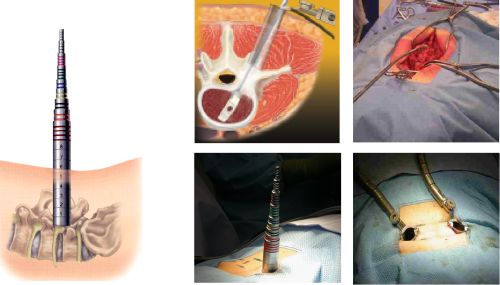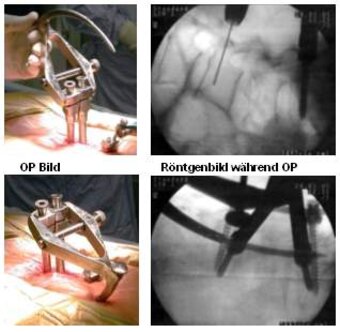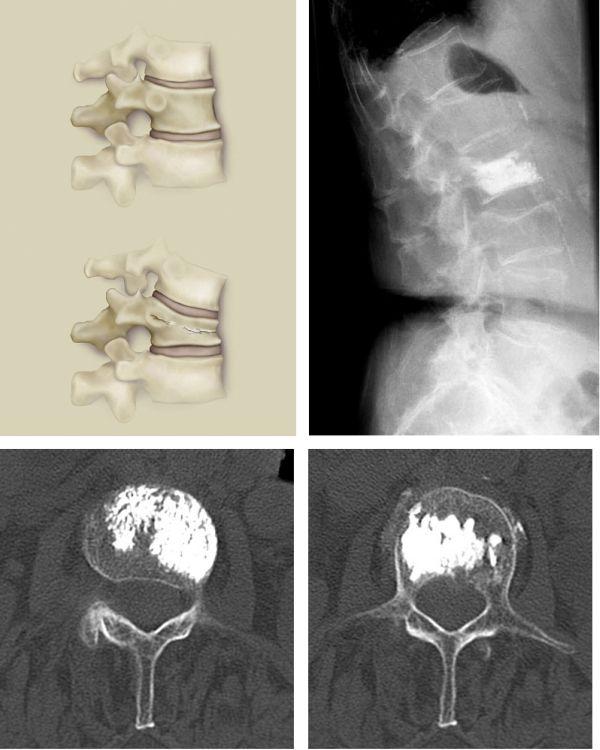Minimal invasive spine surgery
By using the latest minimal invasive surgical procedures the operative treatment of patients with spine disorders became significantly gentler. The well-being of our patients is therefore less affected by the surgery. The recuperation time after surgery is reduced.
Minimal invasive techniques can be used for the treatment of degenerative, inflammatory and tumorous diseases of the spine, such as:
- Back pain
- Painful disc diseases
- Herniated Disc
- Spinal stenosis
- Degenerative instability
- Osteoporotic subsidence (vertebral fracture)
- Spondylodiscitis
- Spinal abscess
- Tumor-related instability
Minimal invasive approach to the spine
To access the spine the muscles are not cut and detached, but gently dilated using increasingly thicker tubes. Thereafter, a surgical tube is inserted, through which the operation is performed using an operating microscope as well as micro-instruments. When the tube is removed at the end of the operation, the muscles set in again.
Minimal invasive vertebral fusion
In spondylolisthesis, vertebral compression, or infection, a vertebral fusion may become necessary. These operations are also performed using the minimal invasive method. A special instrumentation set (see picture above) allows the insertion of the screws and the rod through very small incisions of the skin. The muscle is expanded carefully as described above. In difficult anatomical situations additional spinal navigation is used.
Vertebroplasty
Vertebroplasty represents a minimal invasive procedure to treat painful vertebral compressions/subsidence. Under fluoroscopy a needle is inserted through the skin into the compressed vertebral body. Through this needle a viscous bone cement is inserted into the vertebral body and hardens there within minutes. Thereafter the verebra can be stressed again, the pain is usually gone immediately. This treatment is conventionally performed under general anesthesia, but can also be performed under local anesthesia.

Prof. Dr. Ulrich Hubbe, MD
Senior neurosurgeon

Prof. Dr. Jan-Helge Klingler, MD
Senior neurosurgeon
Consultation hours for spine surgery




